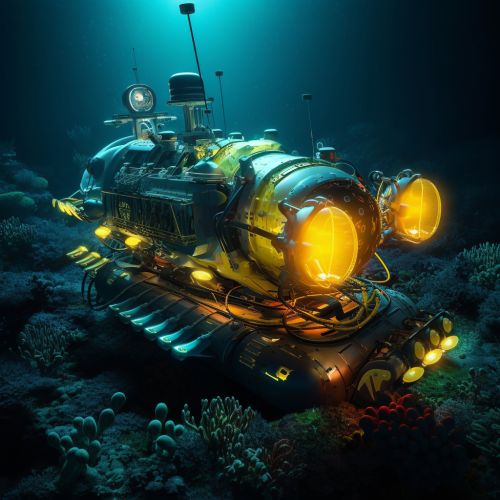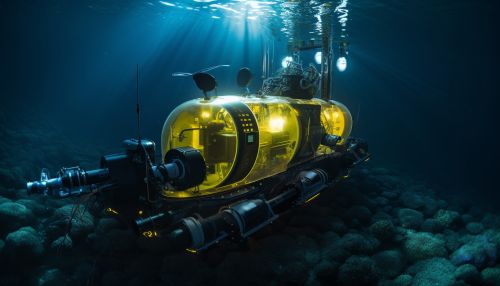Deep-sea exploration
Introduction
Deep-sea exploration refers to the investigation and discovery of the deep-sea environment, which is the lowest layer in the ocean, existing below the thermocline and above the seabed, at a depth of 1000 fathoms (1800 m) or more. It is a relatively recent field of study due to the immense challenges posed by the harsh conditions and immense pressures of the deep sea.


History
The history of deep-sea exploration dates back to the late 19th century, with the first significant exploration conducted by the HMS Challenger expedition from 1872 to 1876. This expedition marked the birth of oceanography and revealed a wealth of previously unknown species, proving that life could exist at extreme depths.
Techniques and Technologies
Deep-sea exploration requires specialized equipment and techniques to overcome the extreme conditions, including high pressure, low temperatures, and lack of light. The primary tools used in deep-sea exploration include sonar systems, remotely operated vehicles (ROVs), autonomous underwater vehicles (AUVs), and manned submersibles.
Sonar Systems
Sonar systems, which use sound waves to map the ocean floor, have been instrumental in deep-sea exploration. Modern multibeam sonar systems can create detailed maps of the seafloor, revealing underwater mountains, trenches, and other geological features.
Remotely Operated Vehicles (ROVs)
ROVs are unmanned, remote-controlled submarines equipped with cameras and instruments to collect data and samples. They are often used in deep-sea exploration as they can withstand the high pressures and low temperatures of the deep ocean.
Autonomous Underwater Vehicles (AUVs)
AUVs are similar to ROVs but operate without a tether, allowing them to cover larger areas. They are often used for mapping the seafloor, detecting underwater objects, and collecting data on water temperature, salinity, and other parameters.
Manned Submersibles
Manned submersibles allow humans to explore the deep sea firsthand. These vessels are equipped with strong hulls to withstand high pressure, and they often have viewing ports or cameras to observe the environment.
Discoveries and Findings
Deep-sea exploration has led to numerous significant discoveries, including new species, geological features, and insights into the Earth's history. For example, the discovery of hydrothermal vents in the 1970s revealed ecosystems that rely on chemosynthesis, challenging the belief that all life on Earth is dependent on photosynthesis.
Challenges and Controversies
Despite its many discoveries, deep-sea exploration also faces numerous challenges and controversies. These include the high cost of exploration, the potential impact on deep-sea ecosystems, and the debate over the exploitation of deep-sea resources.
Future of Deep-Sea Exploration
The future of deep-sea exploration is likely to be driven by advances in technology, such as the development of more capable ROVs and AUVs, and the increasing interest in deep-sea mining. However, the need for responsible exploration that minimizes impact on deep-sea ecosystems will remain a key concern.
